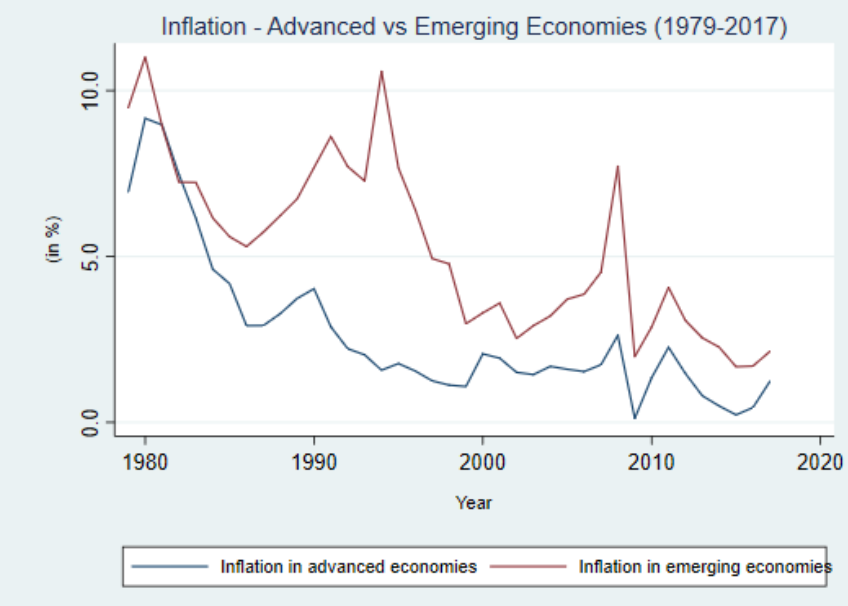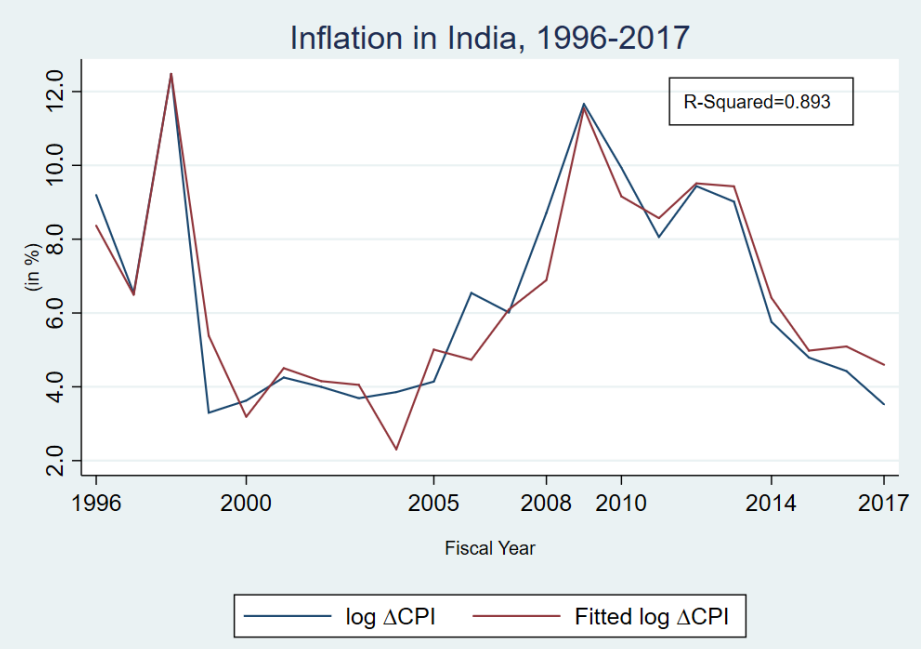Saturday, May 5, 2018
Is inflation dead?
From a presentation by Surjit S Bhalla:
“Some facts to consider about CPI inflation:
- Inflation in the US averaged 1.9 % between 1996 and 2009; and 70 basis points lower over the next eight years.
- A little appreciated inflation fact is that the mean inflation rate in 21 Advanced Economies (AE) excluding the US, averaged some 25 bp less than the US.
- Charts 1 and 2 document median inflation in the Advanced, and the Rest, economies from 1979 to 2017, and 1996 to 2017.
- Note that inflation decline set in prior to 2007 , and in reality started somewhere in the mid-1990s.”
“Explanations for the inflation slowdown:
- Fiscal deficit trends provide zero clues about this slowdown in inflation.
- World GDP growth [IMF weights] was the highest 1996-2007.
- World growth has moved inversely to world inflation.
- Output gap, or considerations thereof, do not explain, inflation slowdown.
- Demography (changes in dependency ratio) does explain some of the decline in inflation.
- However, the most consistent explanation for the decline in inflation is the large increase in college graduates in the Rest of the world compared to such supply in the West (Advanced Economies)”
“What explains Indian inflation? – Procurement prices and rural wage growth:
- Procurement prices and rural wage growth matters for Indian inflation, not much else.
- Further, the impact of procurement prices is diminishing over time, especially over the last three years.
- Each 1% increase in (lagged) procurement prices leads to a 12 bp increase in inflation.
- Each 1 % increase in rural wages leads to a 28 bp increase in inflation.
- The model is able to explain 89 % of the variation in log inflation, 1996-2017.”
In my recent paper with Sangyup Choi, Davide Furceri, Saurabh Mishra, and Marcos Poplawski-Ribeiro, we study the dynamic impact of global oil price shocks on domestic inflation. We find that a 10 percent increase in global oil inflation increases domestic inflation by about 0.4 percentage point on impact, with the effect vanishing after two years and being similar between advanced and developing economies. My paper is available here. The working paper version is available here.
Posted by at 2:19 PM
Labels: Inclusive Growth
Subscribe to: Posts

